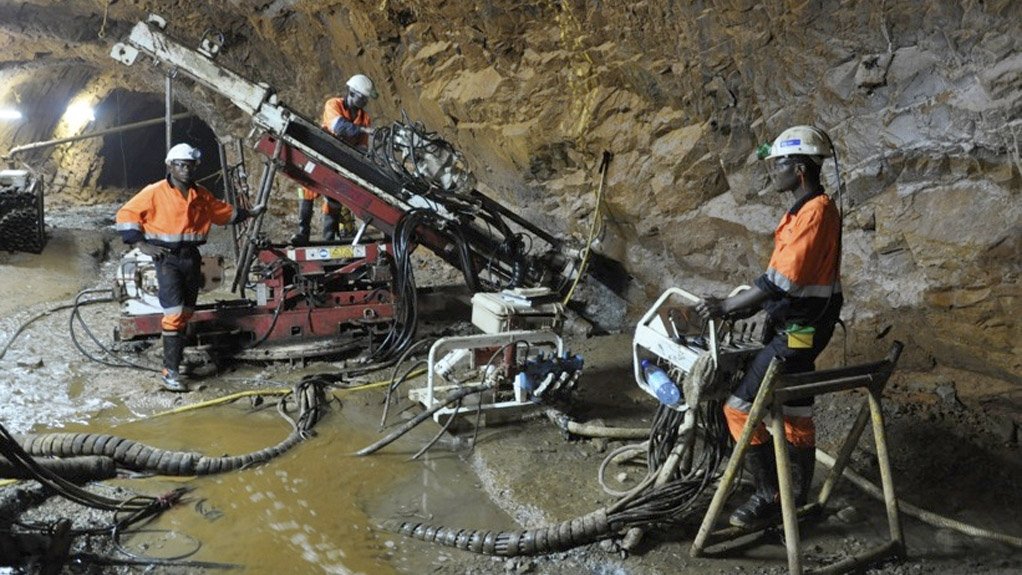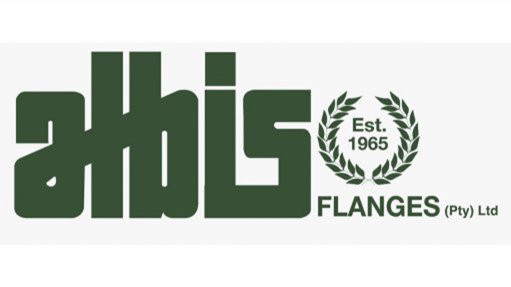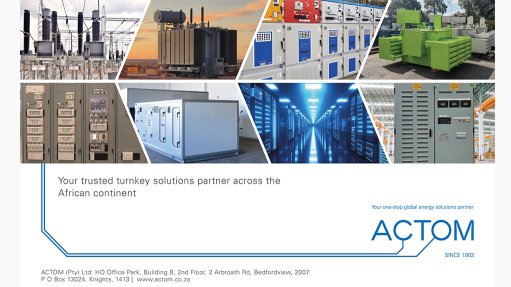Century-old Kipushi mine starts up again after 31-year hiatus
Dual-listed Ivanhoe Mines has announced the completion of construction and the restart of the Kipushi zinc/copper/lead/germanium mine, in the Democratic Republic of Congo (DRC), 100 years after it first started operations, and 31 years since it was placed on care and maintenance.
First feed of ore into the new concentrator was achieved on May 31, with first concentrate subsequently produced on June 14.
Offtake agreements for Kipushi’s high-grade zinc concentrate have been signed with Hong Kong-based CITIC Metal and Singapore-based Trafigura Asia Trading. Further offtake agreements are expected to be signed in the coming months.
In addition, financing facilities totalling $170-million provided by CITIC Metal, Trafigura and First Bank DRC of Kinshasa, have been arranged, with $50-million drawn to date. Kipushi is 68%-owned by Kipushi Holding, a wholly owned subsidiary of Ivanhoe Mines, with the remaining 32% of KICO-owned by Gécamines.
As per the terms of the joint venture (JV) agreement between Kipushi Holding, KICO and Gécamines, as announced on January 16, Gécamines will acquire an increasing percentage of the share capital and voting rights in KICO over time, subject to completing conditions precedent.
"Returning the historic Kipushi mine to production alongside our DRC State-owned JV partner Gécamines marks a century after Kipushi’s first operations. The rebirth of the mine is a major and state-of-the-art achievement for our operations team, the people of the DRC, and the local community in Kipushi town.”
“With the construction and first concentrate milestones delivered substantially ahead of schedule, Kipushi will be one of the world's leading producers of high-grade, low-emissions zinc and associated metals,” Ivanhoe Mines’ founder and executive co-chairperson Robert Friedland said.
Gécamines’ chairperson Guy-Robert Lukama Nkunzi added that the resumption of operations at the Kipushi mine, after more than three decades of inactivity, was important for Gécamines and for the people of the Haut-Katanga’s province.
“It is not only high zinc grades that make Kipushi an extraordinary mine. Whilst at this stage only the Big Zinc deposit has been certified, the mine shows great potential for other metals that are critical to meet today’s global industrial needs.”
“Through the renewed KICO project, achieved in cooperation with our partner Ivanhoe Mines . . . Gécamines will be in a position to play a greater role than in the past. Concurrently with the mine’s reconstruction, our partnership has been significantly restructured in terms of the project’s governance.”
“As a result, Gécamines’ shareholding in the project has been reinforced, which gives us increased power to influence key decisions, the possibility of acquiring KICO’s products to ensure local processing, and, above all, the prospect of becoming a majority shareholder again after the ‘big zinc’ is depleted.”
Kipushi’s production guidance for this year is based on several assumptions and estimates as of July 2, including, among other things, assumptions about the timing of the ramp-up of the new 800 000 t/y Kipushi concentrator.
As such, the 2024 guidance for contained zinc in concentrate is between 100 000 t and 140 000 t.
Dry commissioning of the new 800 000-t/y Kipushi concentrator started in early May, with first ore from the surface run-of-mine (RoM) stockpiles fed through the ball mill during the evening of May 31. The first batch of concentrate production was achieved on June 14. Ramp-up to steady-state production is expected in the third quarter.
Basic engineering is underway to increase the processing capacity of the Kipushi concentrator by 20% to 960 000 t/y. Basic engineering of a debottlenecking program is targeting a 20% increase in processing capacity of the newly constructed Kipushi concentrator.
The debottlenecking program is expected to take about nine months, based on the ready availability of equipment. Since mining started in late 2023, there is sufficient capacity to increase mining and hoisting rates to support an upsized concentrator.
As of June 30, a total of about 336 000 t of ore at an average grade of 23.4% zinc was stored in surface RoM stockpiles adjacent to the Kipushi concentrator. This includes about 150 000 t of high-grade ore at an average grade of over 30% zinc.
The stockpiled ore, which contains nearly 80 000 t of zinc that is currently trading at about $3 000/t, is now being used for the ongoing hot commissioning and ramp-up of the Kipushi concentrator.
Underground mining rates are expected to significantly increase throughout the second half of the year to match the steady-state processing rate of the Kipushi concentrator. Year-to-date underground mining rates have averaged just more than 20 000 t/m, with rates expected to increase to 75 000 t/m, at an average grade of more than 40% zinc, by year-end.
Ivanhoe Mines has recently established a wholly-owned subsidiary, Ivanhoe Marketing, to manage the in-land logistics across the African continent. Ivanhoe Marketing will be responsible for arranging the transportation of zinc concentrate from mine gate to the point of delivery.
Initially, it is expected that about 50% of Kipushi’s concentrate will be delivered to Europe for smelting on a cost, insurance, and freight (CIF) basis, exported via the port of Walvis Bay. The remaining 50% will be a delivered at place (DAP) to the port of Durban.
Ivanhoe Marketing has entered into off-take agreements with CITIC and Trafigura for the sale of Kipushi concentrate. The Kipushi concentrate is expected to contain about 55% zinc, with low levels of impurities. To date, off-take agreements for about two-thirds of Kipushi’s zinc concentrates over a five-year term have been agreed.
In addition to the off-take agreements, Trafigura and CITIC Metal will each provide a loan facility to KICO for $60-million over the term of the offtake contract, at a secured overnight financing rate (SOFR), plus 6%.
A bank facility has also been signed with domestic lender FirstBank DRC for $50-million at SOFR plus 4.5%.
The updated greenhous- gas (GHG) emissions assessment recently completed by Skarn Associates confirms that Kipushi will be the lowest carbon emitter per unit of zinc production in the world. The fact that Kipushi will be the lowest GHG emitter per tonne of zinc produced is partially owing to the ultra-high-grade Big Zinc orebody, which has an average head grade of over 36% zinc over the first five years of operation.
Ivanhoe said that the Kipushi head grade is more than 6.5 times more than the average head grade of the top 20 zinc mining operations in 2023. A high head grade means significantly less rock is mined, hauled, and milled for the same tonne of zinc produced.
The total peak power required by the mining and milling operation is only 23 MW.
The low carbon emissions intensity is also a function of the DRC grid being among the world’s cleanest, with 99.5% of grid power generated from hydroelectricity, according to the US Energy Information Administration.
On a Scope 1 and 2 basis, reported from ore to mine gate, Kipushi’s GHG emissions intensity for 2025 is expected to be 0.019 t of carbon dioxide equivalent (CO2-e) per tonne of contained zinc produced. This comfortably ranks Kipushi near the bottom of the Scope 1 and 2 GHG emissions curve. For comparison, the 2022 Scope 1 and 2 GHG emissions intensity for Kamoa-Kakula, which is the lowest carbon-intensive major copper mine globally, was 0.16 t CO2-e per tonne of contained copper produced.
In terms of safety, during the 3.3-million man-hours worked on the construction of the Kipushi concentrator, no lost time injuries were recorded. Therefore, the lost time injury frequency rate (LTIFR) for the concentrator during construction was zero. The recently completed Phase 3 concentrator at Kamoa-Kakula also completed construction with an LTIFR of zero.
Zinc’s primary use is for protecting steel against corrosion, which accounts for over 60% of the metal’s worldwide use. In 2023, according to World Steel Association data, global crude steel production was about 19-billion tonnes.
Zinc’s use in the energy transition is primarily in the generation and transmission infrastructure, as well as in the emerging battery storage technology. Zinc is vital in the protection of solar panel fixtures and wind turbine structures from extreme weather and in preventing the rusting of electric transmission towers.
Article Enquiry
Email Article
Save Article
Feedback
To advertise email advertising@creamermedia.co.za or click here
Press Office
Announcements
What's On
Subscribe to improve your user experience...
Option 1 (equivalent of R125 a month):
Receive a weekly copy of Creamer Media's Engineering News & Mining Weekly magazine
(print copy for those in South Africa and e-magazine for those outside of South Africa)
Receive daily email newsletters
Access to full search results
Access archive of magazine back copies
Access to Projects in Progress
Access to ONE Research Report of your choice in PDF format
Option 2 (equivalent of R375 a month):
All benefits from Option 1
PLUS
Access to Creamer Media's Research Channel Africa for ALL Research Reports, in PDF format, on various industrial and mining sectors
including Electricity; Water; Energy Transition; Hydrogen; Roads, Rail and Ports; Coal; Gold; Platinum; Battery Metals; etc.
Already a subscriber?
Forgotten your password?
Receive weekly copy of Creamer Media's Engineering News & Mining Weekly magazine (print copy for those in South Africa and e-magazine for those outside of South Africa)
➕
Recieve daily email newsletters
➕
Access to full search results
➕
Access archive of magazine back copies
➕
Access to Projects in Progress
➕
Access to ONE Research Report of your choice in PDF format
RESEARCH CHANNEL AFRICA
R4500 (equivalent of R375 a month)
SUBSCRIBEAll benefits from Option 1
➕
Access to Creamer Media's Research Channel Africa for ALL Research Reports on various industrial and mining sectors, in PDF format, including on:
Electricity
➕
Water
➕
Energy Transition
➕
Hydrogen
➕
Roads, Rail and Ports
➕
Coal
➕
Gold
➕
Platinum
➕
Battery Metals
➕
etc.
Receive all benefits from Option 1 or Option 2 delivered to numerous people at your company
➕
Multiple User names and Passwords for simultaneous log-ins
➕
Intranet integration access to all in your organisation

















